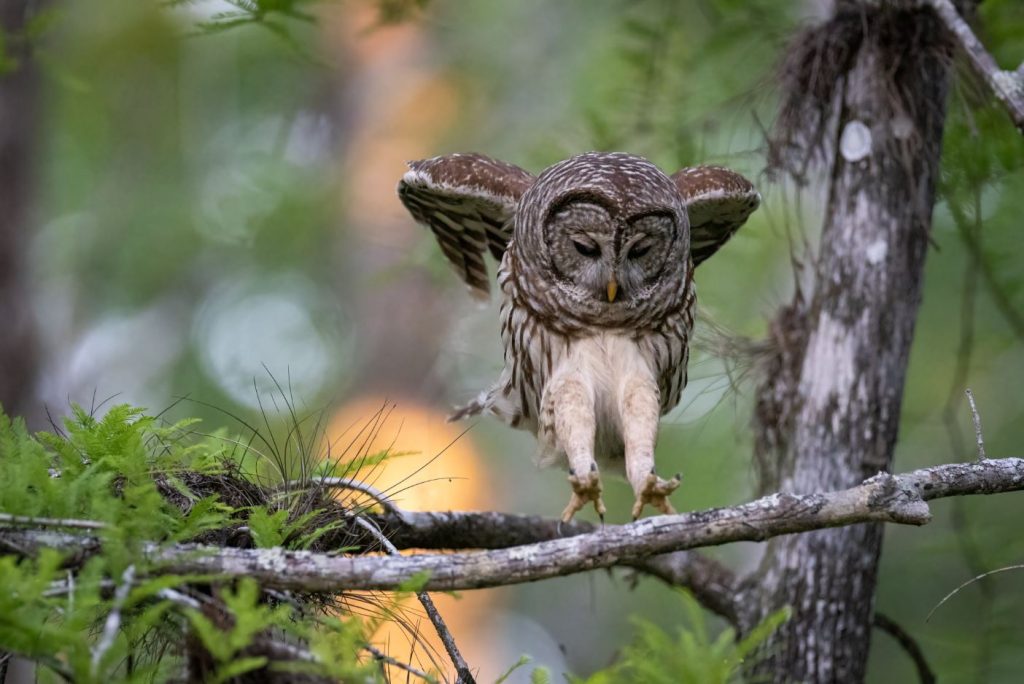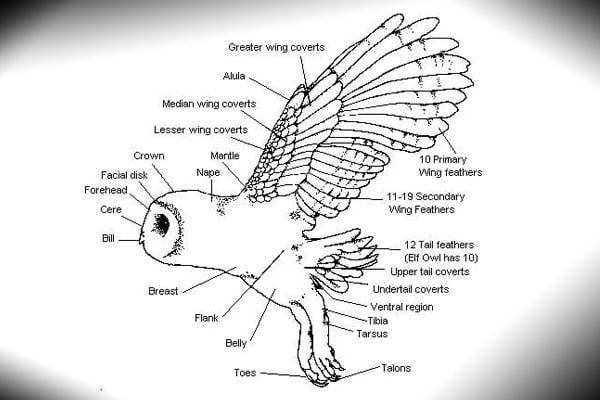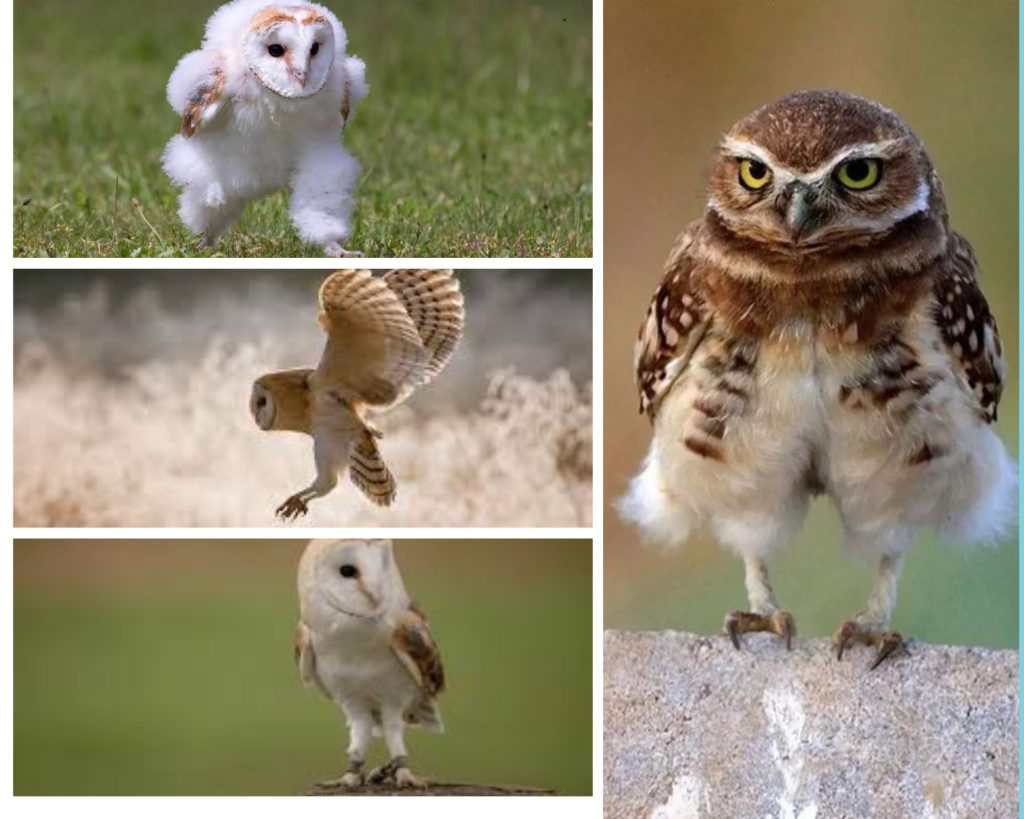Have you ever seen a photo of an owl with its legs fully visible? If you have, there’s a good chance you were shocked—and maybe even a little amused. Under all that fluff, owls hide an unexpected secret: incredibly long, powerful legs.
But why do owls have such long legs? Is it just an odd quirk of nature, or is there a hidden purpose behind this striking feature of owl anatomy?
In this article, we’ll take a deep dive into the world of owl legs—exploring their structure, purpose, and surprising advantages. Plus, we’ll show you jaw-dropping photos of owls with legs that will change how you see these mysterious birds forever.
Yes, Owl Legs Are Real—and They’re Really Long
When you look at an owl, chances are you’re captivated by its round face, big eyes, and majestic feathers. What you don’t see are the legs hiding beneath that thick plumage. But make no mistake—owl long legs are not only real, they’re essential to the bird’s survival.
Some owl legs can be as long as half the bird’s body height. That’s right—beneath the fluff, you’ll find long, feathered limbs designed with precision for life as a stealthy predator.
Understanding Owl Anatomy: It’s More Than Feathers and Eyes
To understand the role of those surprising legs, let’s take a quick look at basic owl anatomy.
Owls are built for silent hunting. Their bodies have evolved to maximize:
- Stealth
- Grip strength
- Flight control
- Sound sensitivity
Here’s how different body parts support these traits:
| Body Part | Function |
|---|---|
| Facial Disk | Funnels sound to the ears for pinpoint hearing |
| Wings | Broad and rounded for silent gliding |
| Talons | Sharp and strong for catching prey |
| Legs | Long and muscular for reach, grip, and attack |
While the wings and head get most of the attention, the legs play a vital—but often hidden—role.
Why Are Owl Legs So Long? The Science Explained
Let’s break it down. Owls have long legs for several important reasons:
1. Improved Hunting Reach
Owls are ambush predators. Having long legs lets them reach down through thick grass, snow, or branches to grab prey.
Whether it’s a mouse hiding in the grass or a rabbit dashing for cover, those extended limbs let the owl strike fast—and hard.
2. Shock Absorption
When an owl swoops down at high speed, it needs to absorb the impact. Its long legs act like suspension springs, cushioning the landing while maintaining a tight grip.
3. Striking Power
A key part of the owl anatomy, the legs hold powerful tendons that contract like a trap. Once the talons latch onto prey, the leg muscles clamp down with intense force—often enough to kill instantly.
4. Thermal Regulation
Believe it or not, the feathers that cover those legs also play a role in keeping owls warm. The legs themselves are long and narrow, but covered in thick feathers to help insulate against the cold.
How Do Long Legs Help Owls Hunt?
This is where owl anatomy truly shines.
Owls aren’t like falcons that divebomb from the sky at lightning speed, or hawks that soar and chase prey over long distances. Instead, owls rely on stealth, silence, and surprise. Their hunting strategy is more like that of a ghost in the night—silent, calculated, and incredibly effective.
Perch. Listen. Strike.
Owls typically hunt from a perch—perched quietly on a tree branch, fence post, or other elevated spot. Their exceptional hearing allows them to detect the tiniest rustle in the grass, the faint scampering of a rodent under snow, or even the subtle breathing of a sleeping bird.
When the sound of prey reaches their ears, the owl locks on. Then, almost without a sound, it launches.
And this is where owl legs make all the difference.
The Power of Reach
As the owl descends, its long legs extend forward in preparation for impact. These legs give it a massive reach advantage, allowing it to strike prey that may be hiding deep within grass, leaf litter, or even under a thin layer of snow.
The longer the legs, the wider the strike zone. Owls don’t need to land directly on top of their prey—they can reach into places other birds can’t.
This is especially useful when hunting in dense environments such as:
- Tall prairie grass
- Forest floors with underbrush
- Snow-covered fields
- Rocky or uneven terrain
Imagine the Scene…
It’s just after dusk. A vole scurries beneath the cover of tall grass, completely unaware it’s being hunted.
Perched silently above, a barn owl tilts its head to triangulate the sound. With pinpoint accuracy, it launches and glides downward without a single wingbeat. In the final seconds, the owl thrusts its long legs forward—sharp talons open—and snatches the vole from the earth without ever touching the grass.
No noise. No warning. No escape.
That’s the power of owl long legs.
Precision in Motion
Those legs aren’t just long—they’re also extremely flexible and strong. This flexibility gives owls precise control during the final moments of an attack. They can make micro-adjustments mid-air, maneuvering their talons like guided missiles.
Once contact is made, the powerful leg muscles and locking tendons instantly clamp down on the prey, often with enough force to kill or immobilize it on impact.
Quick Recovery and Lift-Off
After the strike, owl legs help with more than just holding onto prey—they also play a role in taking off again. Because owls often hunt in thick brush or snowy terrain, they rely on their legs to give them a stable grip and leverage to lift off with their catch.
This is especially important for heavier prey, such as rabbits or large rodents. The strength and length of their legs allow them to balance, adjust, and lift prey several times their own body weight.
In short, owl long legs aren’t just a quirky feature—they are a critical hunting adaptation. They give owls the reach, power, and precision needed to dominate as night-time predators. Whether it’s stretching through snow, gripping a mouse under leaves, or stabilizing after a dive, those legs are nature’s perfect weapon.
Owl Legs vs Other Birds of Prey
How do owl legs compare to the legs of hawks, falcons, or eagles?
| Bird | Leg Length | Function |
|---|---|---|
| Owl | Long & feathered | Stealth strikes, extended reach |
| Hawk | Shorter | Soaring and active hunting |
| Falcon | Compact | High-speed diving |
| Eagle | Muscular but shorter | Grabbing large prey |
Owls have the advantage when it comes to stealth hunting in dense forests, where long legs allow precision in cluttered environments.
Funny and Surprising Owl With Legs Photos
If you’ve never Googled “owl with legs”, now’s your moment. The results are equal parts hilarious and fascinating.
[Insert several high-resolution, credited photos of owls standing upright, exposing their full legs]
These photos have gone viral countless times because they contrast our usual image of a fluffy owl with something almost… absurd. But behind the humor lies a true example of evolutionary genius.
Do All Owl Species Have Long Legs?
Pretty much—yes.
While leg length varies depending on the species, all owls share the same basic leg structure. Some of the most extreme examples include:
- Barn Owls – Their long, thin legs help them hunt in open fields.
- Great Horned Owls – Thicker, more powerful legs for grabbing larger prey.
- Snowy Owls – Shorter-appearing legs, but hidden under dense plumage for warmth.
Even small owls like the Eastern Screech Owl have disproportionately long legs when compared to their compact bodies.
Common Myths About Owl Legs—Debunked
Owl legs have become something of an internet sensation in recent years. Viral images showing owls with ridiculously long, stick-like legs have sparked fascination—and confusion. But as with many things online, some of the most widely shared “facts” about owl anatomy are misunderstood.
Let’s clear up some of the biggest myths about owl legs once and for all:
Myth 1: Owls Have Stumpy, Short Legs
Truth: This is one of the most common assumptions people make when looking at an owl perched on a branch. Their round, compact bodies covered in thick feathers create the illusion of short legs. In reality, owl legs are long, slender, and powerful, hidden under dense layers of plumage for warmth and stealth.
If you’ve ever watched an owl take off or stretch while preening, you may have caught a glimpse of those surprising limbs. What seems like a fluffy ball of feathers is actually a streamlined predator in disguise.
Myth 2: Only Some Owls Have Long Legs
Truth: Many people think the long legs are a strange feature limited to just a few odd-looking owls. But that couldn’t be further from the truth. Nearly every owl species has long legs—from tiny Eastern Screech Owls to massive Great Horned Owls and even snowy owls.
The shape, feathering, and thickness of the legs might vary depending on the species and habitat, but the fundamental structure remains the same. Long legs are part of the standard owl anatomy, developed to help them hunt effectively, perch securely, and move through diverse terrain.
Myth 3: Those Viral “Owl With Legs” Photos Are Fake
Truth: When people first see photos of an owl with legs fully exposed—especially when they’re standing tall or being gently held by a handler—it’s hard to believe the images are real. Some even assume they’re Photoshop hoaxes.
But they’re 100% authentic.
The reason they look so bizarre is because we’re simply not used to seeing owls in that state. Most images and illustrations of owls emphasize their heads and wings, not their legs. But when owls are photographed from a specific angle or caught mid-stretch, those long limbs are suddenly front and center—and yes, they can look a little like skinny stilts under a ball of fluff.
These images aren’t fake—they’re just rare and brilliantly timed.
Final Thought:
Owls are some of the most misunderstood birds in the animal kingdom—not because they’re secretive, but because their appearance hides so much of their true anatomy. Those long owl legs aren’t an oddity or a joke—they’re a key evolutionary feature that makes these birds such exceptional hunters.
Next time you see a viral owl photo making the rounds, you’ll know: not only are those legs real, but they’re one of the coolest parts of the owl’s hidden anatomy.
Read also: Are Owls Nocturnal or Just Misunderstood? All About Owls
Final Thoughts: Nature’s Stealthy Predators
Owls are masters of disguise, and their long legs are the perfect example of form meeting function. Beneath their adorable, fluffy appearance lies a highly specialized predator built for silence, power, and precision.
So next time you see an owl with legs photo floating around online, remember—those limbs aren’t just for show. They’re part of one of the most fascinating avian designs in the natural world.
FAQ: All About Owl Legs
Q: Are owl legs longer than other birds?
A: Yes, especially relative to body size. Their legs are long to aid in hunting and mobility.
Q: Do owl legs bend backward?
A: It may look that way, but owls have a similar joint structure to humans. What appears to be a backward knee is actually the ankle.
Q: Are there any owl species with short legs?
A: Not really. All owls have proportionally long legs; they just vary in thickness and feather coverage.
Bonus: Share the Wonder
Loved learning about owl long legs? Share this article with a fellow bird lover or pin your favorite owl anatomy image to Pinterest!
🔗 More bird insights on WildBirdLady.com
Latest Posts
What Is a Group of Hawks Called? Discover the Unique Names for These Fierce Birds of Prey
When we think of hawks, we often picture a solitary predator soaring high in the sky or perched silently in a tree, surveying its domain with laser-sharp focus. But did you know that hawks do...
What Is a Group of Pelicans Called? The Surprising Name Behind These Coastal Giants
Pelicans are among the most recognizable birds in the world, thanks to their oversized bills and graceful gliding over lakes, rivers, and coastlines. But have you ever wondered: what is a group of...






